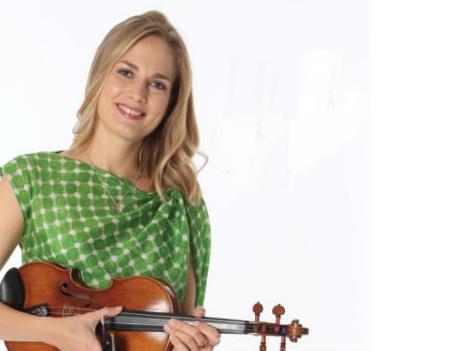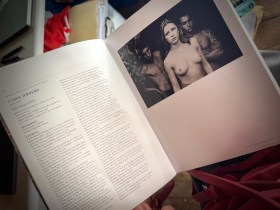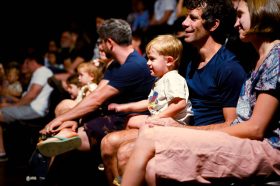ACO violionist Satu Vänskä with a Stradivarius from the ACO’s investment fund. Image: Australian Chamber Orchestra
The four wind ships of change for not-for-profits – the emergence of social enterprises, the government contracting on the basis of outcomes, the recognition of shared value businesses and the growth of socially responsible investors come together at an exciting new axis: impact investing.
What’s emerging, the silver lining, are new financial vehicles that allow the overlapping needs of not-for-profits and governments and private investors, companies, individuals to come together for social purpose. It’s often associated with the development of social impact bonds in the UK or US or social benefit bonds in New South Wales.
Bonds are only one means in which to give expression to impact investing. But let’s take bonds as a means of making my discussion concrete now and opening up discussion on the relevance to the arts. Bonds are a means by which a government can offer a performance-based contract to an organisation to deliver a public purpose. In New South Wales it’s to reduce the extent of out-of-home care for children having to be removed from their families. It is being applied elsewhere to prisoner recidivism or to increase social housing and so on.
I am persuaded that impact investment can be applied to the creative arts. True, in the social and government arena the mechanism is often to turn a stream of cost savings via performance-based contract into a flow of income for investors, who through a social enterprise have achieved the result. Its virtue is funding investment in prevention, which government does far too rarely, rather than just endlessly expending on crisis management.
In the arts arena it seems to me that that fundamental equation is somewhat different. It’s more like the model epitomised by the investment in Good Start in early child care. It could fund an upfront investment in a high-risk venture (most arts are high-risk ventures) that may attract future income through sales or commissions or paying audiences, albeit that it most of us would accept that it’s generally unlikely that the revenue will fully offset production costs.
A variation might be funding a reduction in the ongoing costs of artistic production through allowing, perhaps arts organisations or an artists’ co-op or even individuals to own, rather than rent or lease their own studios or housing. Think about the funding of university students. In a sense what I’m talking about here is income investment as a form of income contingent loan, to be repaid, at least partially, through flows of income over time.
Please don’t misinterpret my undoubted enthusiasm. I don’t see impact investment replacing government grants and philanthropic donations and corporate sponsorships as the source of arts funding, nor should it. The new investment vehicle that I’m talking about should be seen to supplement and complement other funding sources.
Four Australian examples show how impact investment can help to sustain artistic creativity.
Micro-finance for artists
Foresters Community have a number of arts organisations among their social enterprise clients. They provide competitive loans, low cost, low dock, high risk where banks have traditionally feared to tread. Foresters comprehend the value of micro-finance: to buy accommodation, to purchase equipment, to develop ideas, in effect persuading arts organisations that they can organise themselves to repay loans which over time, significantly reduce their operating expenses and maximise the value of the funding they receive from other sources. So Foresters Community Finance, for example, has funded the Artery cooperative, allowing the purchase of a warehouse to create subsidised studios for professional artists.
Creative industries business incubators
QUT Creative Enterprise Australia in Brisbane has taken the well-established mechanism of small business incubators and given it an artistic twist. They offer business mentoring support and early stage investment to creative industries such as fashion and design and film and TV and interactive media.
Capital growth
The Australian Chamber Orchestra has established a managing investment fund which allows individuals to invest in fine instruments, the value of which is likely to rise over time, and then lend those instruments to performers. So as the Stradivarius is played to perfection, its worth as a capital investment increases.
Innovation fund
Most interesting and an absolute tribute to Cathy Hunt, is the recent establishment of the Arts Business Innovation Fund in Queensland, a million dollar fund -half of it state money, half of it from the Tim Fairfax Family Foundation – to be awarded not, as you might expect, as a grant and not as a philanthropic gift, but as a source of investment, a sum of money, of which some significant part must be taken as a loan to be repaid and then reinvested in future arts activities.
Perhaps organisations will choose to dig into their existing resources to repay it. Far better, I think, they may plan to achieve a stream of income that can help to subsidise their long-time artistic ambitions and repay the funding on that basis.
These are small but fascinating beginnings, I think. They suggest just a few ways in which traditional funding can be enhanced by impact investing and in which creativity can take the form of entrepreneurship to build sustainable arts, to fund cultural mission into the future.
They may, ironically, end up giving greater creative freedom than grants or gifts or corporate sponsorships. In this new world it may turn out that a financial instrument gets perhaps more equity perhaps may turn out to have less strings attached than a government grant or a company sponsorship or even a philanthropic donation. The world of business may, paradoxically, offer more artistic autonomy. It is at least worth considering.
This article is the first in a two-part series, extracted from Impact Investment in Culture? delivered at the Currency House Business and Creativity Breakfast Series 2014 on 19 November.





